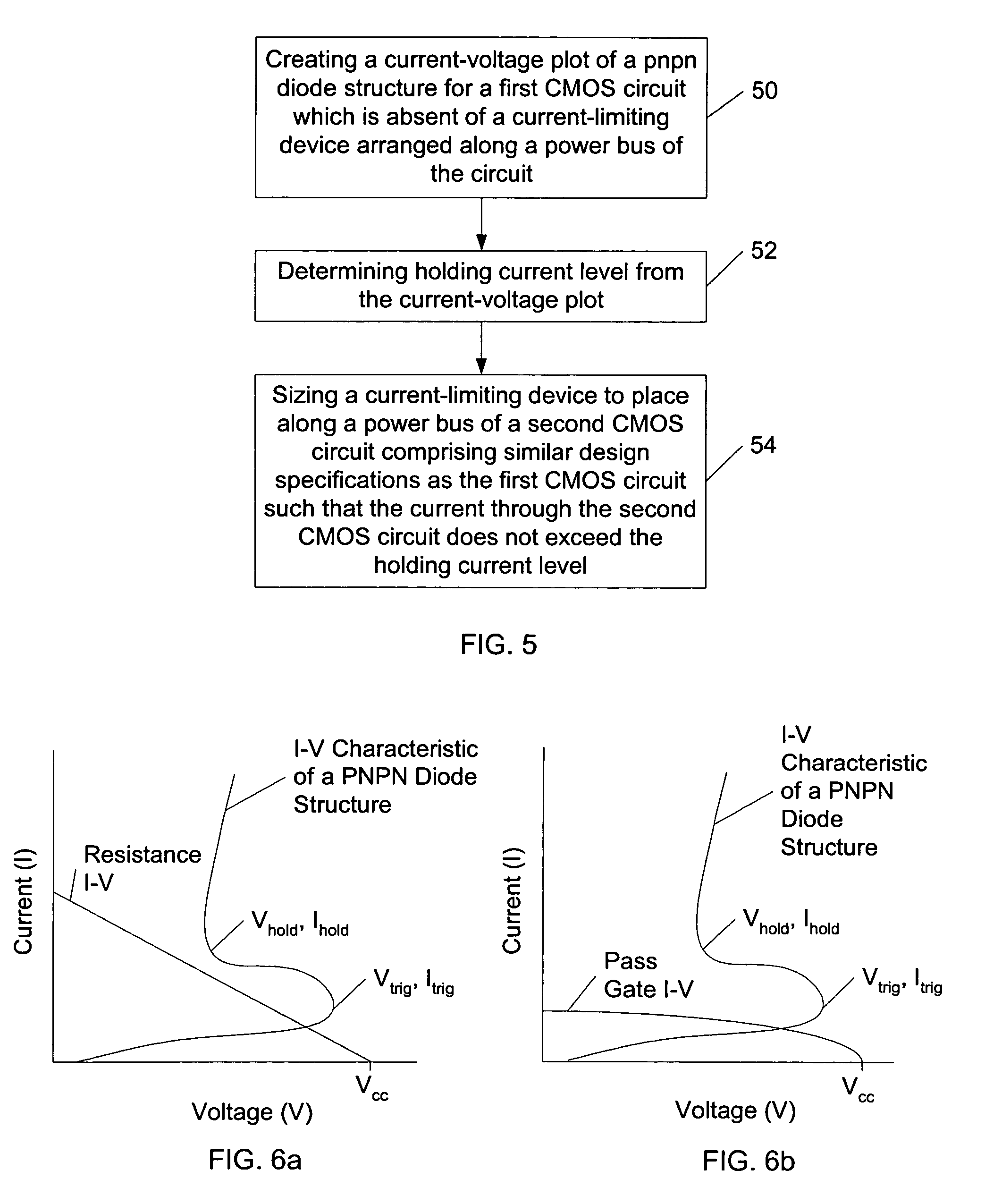Memory cell array latchup prevention
a memory cell array and latchup prevention technology, applied in the field of integrated circuits, can solve the problems of cmos circuits that are not suitable for switching, scr enters a low impedance state, and the junctions of circuit bipolar transistors to become forward-biased, so as to improve the reliability of the device and improve the reliability of the cmos circui
- Summary
- Abstract
- Description
- Claims
- Application Information
AI Technical Summary
Benefits of technology
Problems solved by technology
Method used
Image
Examples
Embodiment Construction
[0024]Turning to the drawings, exemplary embodiments of CMOS circuits having current limiting devices arranged along power-supply buses and / or ground buses are illustrated. In particular, FIG. 1a illustrates resistor RL formed along power-supply bus 12 of CMOS circuit 10. FIG. 1b illustrates p-channel pass gate transistor 26 formed along power-supply bus 22 of CMOS circuit 20. CMOS circuit 30 is shown in FIG. 2 having current-limiting device 36 along ground bus 34 and CMOS circuit 40 shown in FIG. 3 includes current-limiting devices 46 and 48 arranged along power-supply bus 42 and ground bus 44, respectively. Each of the circuits is described in more detail below, particularly in reference to the arrangement and type of current-limiting devices included therein. In addition to the current-limiting devices, the CMOS circuits depicted in FIGS. 1a-3 include parasitic resistances Rw and Rs, respectively referring to parasitic resistances of the well regions and substrate used to form co...
PUM
 Login to View More
Login to View More Abstract
Description
Claims
Application Information
 Login to View More
Login to View More - R&D
- Intellectual Property
- Life Sciences
- Materials
- Tech Scout
- Unparalleled Data Quality
- Higher Quality Content
- 60% Fewer Hallucinations
Browse by: Latest US Patents, China's latest patents, Technical Efficacy Thesaurus, Application Domain, Technology Topic, Popular Technical Reports.
© 2025 PatSnap. All rights reserved.Legal|Privacy policy|Modern Slavery Act Transparency Statement|Sitemap|About US| Contact US: help@patsnap.com



